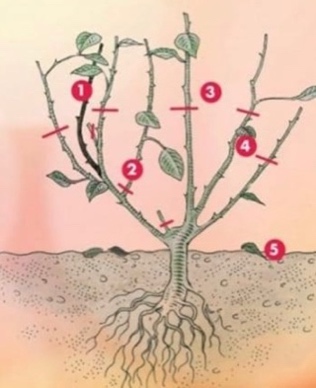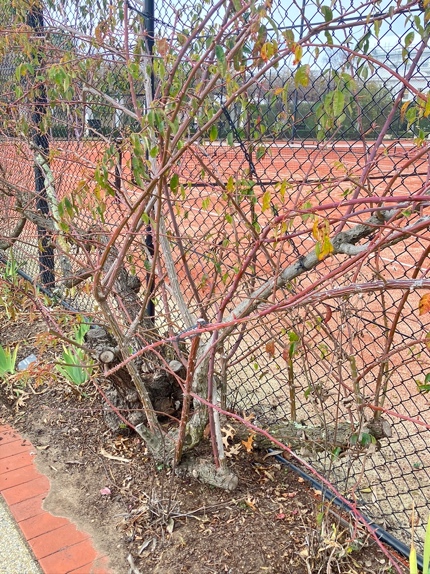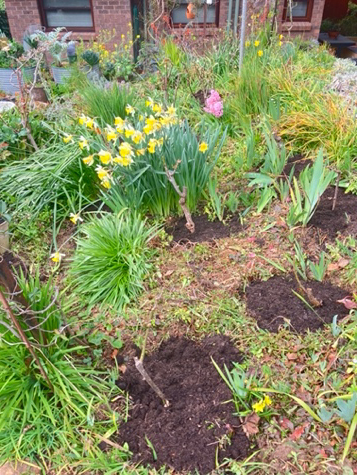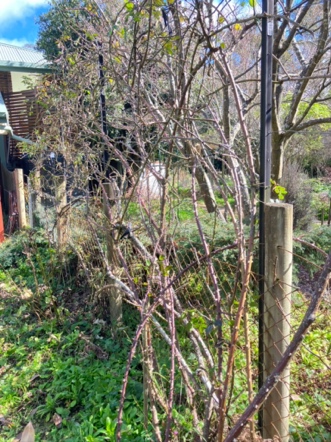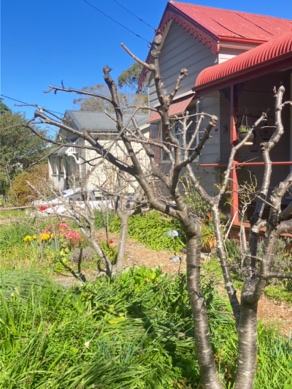‘Pruning for Winter’
Acquiring the basic understanding pruning;
I want to share with you, some of my life-long experiences in pruning techniques.
Hopefully you will be able to acquire an understanding, and the skill, knowledge and confidence to prune your own trees and garden plants.
Fruit trees, Roses, Shrubs (both evergreen and deciduous) and Perennials
To begin:
Firstly: where did I gain the confidence in pruning? What does it take to gain the confidence one needs:
I have been pruning trees (including fruit trees) and all kinds of plants since I was a child.
I grew up in England, where my family had an orchard.
We grew Plums, Damsons, Pears, eating and cooking apples.
One cooking apple in particularly was named ‘Bramley’ it is now heritage listed. They were a large green apple where one apple to grow as big as 300-400mm in diameter, weighing to half a kilo.
I do remember two apples used to fill my picking basket.
Cox’s Orange Pippen, Johnathon, Macintosh this was a beautiful little red apple, used for pollination for Cox’s Orange Pippin
(three great eating apples that we grew. All I believe today are heritage listed)
Since 5 years old I have been pruning fruit trees, together with a formal college training.
After 50 years I am a trained specialist in many different pruning techniques that include established
Fruit trees: including: open centres, pyramid shape’s espalier’s against a wall or fence.
Ornamental & weeping trees.
Roses:
Including climbing, espalier systems along fence-lines, old fashioned
Shrubs: evergreen and deciduous,
Perennials
So let’s make a start: why prune & what is the its purpose
Keeping it simple: Pruning is one of best things you can do for all trees shrubs and roses.
IMPORTANT: These basic rules apply to all roses fruit trees deciduous and evergreen plants.
The basic principles of pruning’ Need be adhered to achieve good results.
Time of year: Winter pruning is done in temperate Eastern Australian climate from Late July-late August.
My approach
- Image 1: Is used to cut out diseased and dead wood ,
- Image 2: To arrange the rose branches into an appropriate shape. The aim is to create a shape that has ,that will form the framework for the next year’s growth.
- Image 3: To cut one third off healthy growth stems, this will encourage new growth to form in Spring and allow air to circulate and light to penetrate the branches to form flowers.
- Image 4: Encourage new stems to bear fruit or have flowers.
- Remember to pick up fallen leaves.
- Check to see no briars are growing from the rose rootstock, this is growth that grows beneath the bud union.
Pruning Climbing Roses
Pruning Fruit Trees
Fruit trees are pruned three time a year
- Firstly Winter Pruning
- Secondly Spring Pruning
- Thirdly Summer Pruning
Time of year: Winter pruning occurs in temperate climate eastern Australia from early may-early\August
- Winter Pruning Fruit Trees
Apples \ Pears Pruning
My approach
When I begin to pruning an apple or pear in a suburban garden, my first thoughts are to walk around the tree.
- Get a sense of what branches are going where! What branches are crossing over one one-other.
- I look to see what branches I can remove to get maximum light into the tree’s centre.
- What large branches I can remove to achieve the most benefit to the tree (light, shape)
- To see if any diseased or damaged branches that have to be removed.
- To begin pruning I remove normally 40% of the ‘water shoots’, the remainder I shorten which hopefully will increase the making ‘fruiting spurs’.
What are fruit spurs
A fruiting spur will form on a shortened branch, in order to form flowers, where it can be pollinated by insects to ‘set’ fruit
To recap
Remember 40% of the water shoots are totally removed.
The remainder are shortened to produce a fruiting spur to an out ward facing bud.
Remove to get more light into the tree’s centre, these may be just growth branches.
Acer Palmatum ‘The Maple’
Maple trees pruned forming a natural archway. Formed through pruning, layering and tying branches, a shady passage way is created (pictures taken August 2024) over the summer and provides Autumn colour.
Weeping Mulberry
This was pruned August 2024.
Spring & Summer Pruning Coming Soon as the year rolls on.

